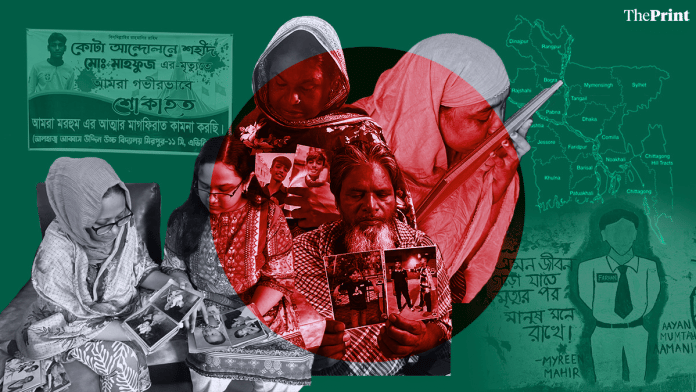Dhaka: The night of 19 July will forever be etched in Abdul Mannan’s memory as the night he desperately searched for his 15-year-old son’s dead body.
Exhausted from hours of shuttling between hospitals, after receiving the devastating call that his son had been shot dead, his only wish was to find his son’s body and end his painful search.
At 6.30 pm, Mannan received a call from one of Rehman’s friends—sobbing. He told Mannan that the police had killed Rehman, and the dead body had been taken to a hospital. But he didn’t know which one.
Before Mannan could ask more, the line went dead.
Thus began a 17-hour search for Rehman’s body.
“We formed teams and split up, each heading in different directions. I must have visited over 10 hospitals that night. I saw countless dead bodies, inconsolable parents, but my eyes were only looking for Rehman,” Mannan recalled.
“My mind had already accepted that he was gone, given the devastation all around, but I just wanted to ensure his body was found and laid to rest with dignity. Looking back, I can’t believe where I found the strength that night,” he added.
At around 11.30 am the next day, Rehman’s body was found at Shaheed Suhrawardy Medical College and Hospital, nearly 10 km from his home in Mirpur. Mannan then broke down, sat and sobbed beside his son’s lifeless body.
But there was no time to grieve—Mannan’s ordeal was far from over.
He claimed the doctors told him Rehman had sustained bullet wounds but insisted that if they released the body, he had to give an undertaking that he would not protest with it and would take it straight home.
Though filled with anger, Mannan lacked the energy to protest.
“Why would I use my son’s body to make a statement? The police killed him, and while his mother waited at home, hoping I might bring her son back alive, I was asked to give an undertaking,” he said.
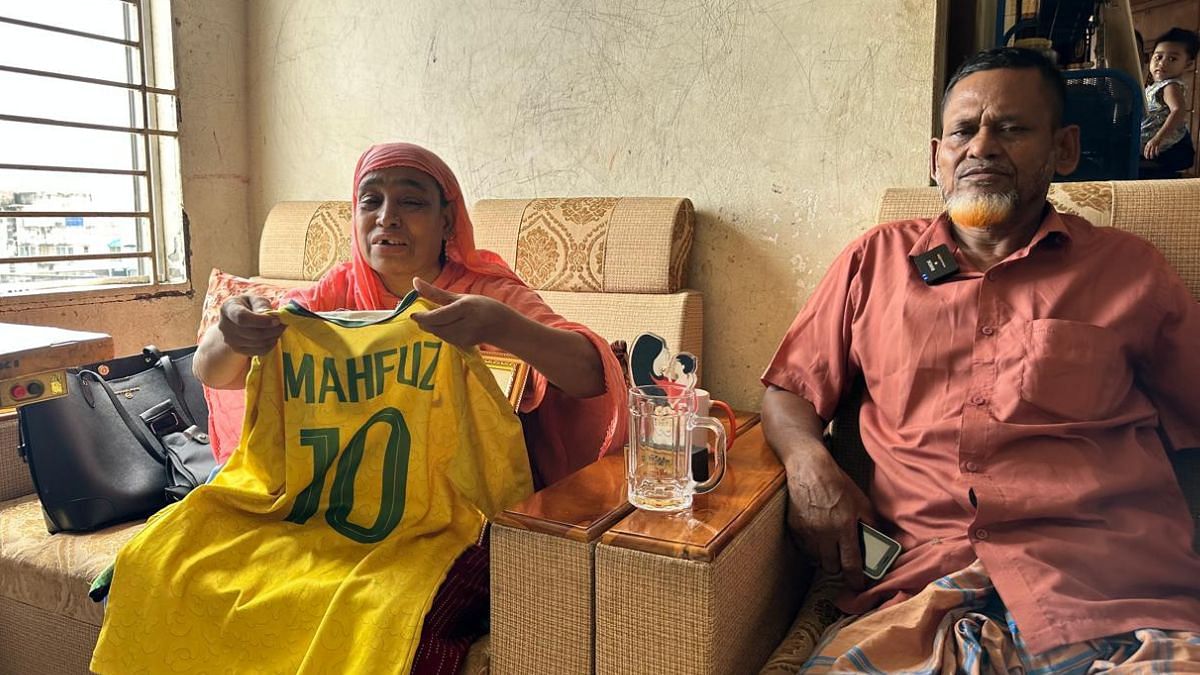
Mannan said there was no post-mortem or investigation done, and no police were there when he went to get his son’s body.
“We were given a medical report which said he was hit by bullets. Now, looking back, there is nothing to show that my son was murdered by the police. His name is just one among many who died in the protests—just collateral damage,” he said.
“He wanted to be in the Army. He used to tell us that he would be an officer one day and would have a pistol of his own. We never thought he would get killed by a bullet,” he said.
Also read: Idol worship an eyesore to Bangladeshi islamists. Durga Puja to be toned down this year
Justice for victims is a challenge
Rehman was just one among many students—all described lovingly by parents and friends as science enthusiasts, ardent Messi fans, aspiring cricketers, budding lawyers. Countless such lives were tragically lost, allegedly to police bullets, during the agitation crushed by the Sheikh Hasina government, which ultimately led to her ouster on 5 August.
The families who lost their children come from diverse social and economic backgrounds, yet their lives now intersect at the same heartbreaking crossroads, united in grief and the search for justice. But they are uncertain how to achieve it
They have high expectations from the interim government, but these deaths may never be officially recorded as killings, despite efforts, due to lack of documentation and proof.
Over 400 people, mostly young students who were part of the protests, lost their lives. In many cases, no post-mortem was conducted and no police complaint for murder was filed despite injuries from bullets that families insist were fired by the police.
There is no official record of how many such killings occurred during the tumultuous months. In instances where cases were registered in July, the police blamed “terrorists” and “politically motivated elements” for joining protests and opening fire at policemen, which led to collateral damage.
A senior Bangladesh Police officer told ThePrint that police have filed cases against the perpetrators, including “errant policemen”, and an investigation has begun.
“The police are investigating every case seriously. Bangladesh police are determined to ensure the punishment of criminals. Cases have also been filed against errant policemen and some have already been arrested,” he said.
He added that no immunity would be given to those involved in the killings in the movement.
“Cases will be investigated professionally based on factual evidence and police reports will be given expeditiously,” The information and communications technology adviser to the interim government, Nahid Islam, told ThePrint.
According to Civitas Legum—the research, programme and response wing of Dhaka University, law department, Bangladesh—collecting data on students allegedly killed in police action, 1,581 casualties have been reported.
It said that Human Rights Support Society (HRSS), a human rights organisation, had confirmed and verified 875 cases up to 13 September after multiple verifications.
Bangladesh Legal Aid and Services Trust executive director Sara Hossain told ThePrint in an exclusive interview that justice for these victims is an enormous challenge as the largest number of allegations are against police, members of the security forces, and the student and youth wing of the Awami League.
She said these cases of murder have to be recorded and investigated.
According to her, another challenge is that many “political recruits” in the police serving under Hasina still remain in office in different places.
“In that context, getting justice is very challenging,” she said.
ThePrint traced and visited five families affected by the violence in Dhaka, some of whom have lost hope while others still have faith, especially after a regime change.
‘They killed him and then blamed miscreants’
Like Rehman’s, Mobarak Hossain’s family is desperate for justice, too.
Hossain, a Messi fan and aspiring footballer, was also killed during the alleged police action on 19 July. His bright yellow football jersey, emblazoned with ‘Messi,’ stands out in his thatched one-room tenement, tucked away at the end of a narrow alley, cow dung splattered on both sides.
His father, Mohammad Ramzan Ali, who is a milkman, said the police refused to acknowledge that his son died from a police bullet.
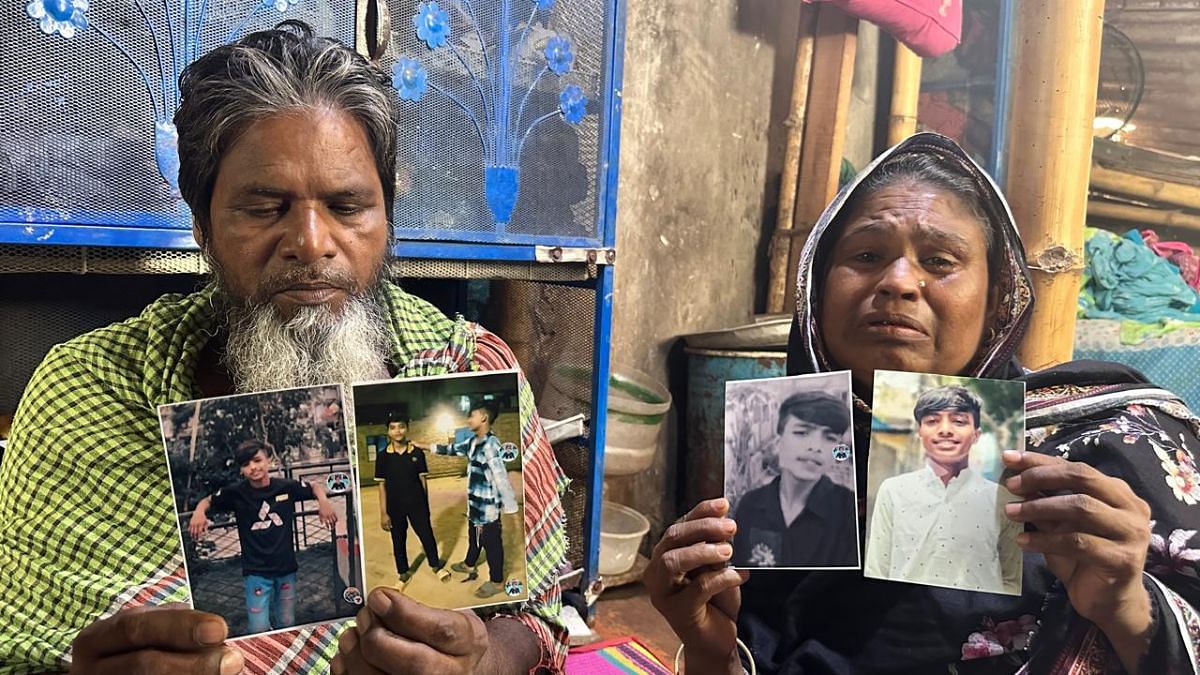
He added that when he went to Kalabagan police station, he was told that an FIR had been registered with his son’s name in it.
“We lost our son, but instead of filing a case against those policemen who shot him, the FIR blames unknown miscreants for opening fire. My son’s friends who were with him told me that he was killed by a police bullet,” he said.
“Is he being called a terrorist now? For being at that protest site?” he asked, sitting in his tiny house that has just bare essentials like utensils, worn-out clothes, and a small TV
After Hossain’s death, a medical report from the hospital listed the cause of death as “bullet penetration” and “septic shock”.
The police filed an FIR, but not for Hossain’s murder. The FIR described the incident as involving “a group of terrorists and miscreants” who allegedly protested and attacked law enforcement officers by opening fire.
The FIR, a copy of which is with ThePrint, alleges that miscreants vandalised government and private property in the attack that the Bangladesh National Party (BNP) and Bangladesh Jamaat-e-Islami, along with student leaders, orchestrated with financial backing.
The report said around 1,000 to 1,500 “terrorists” planning to attack police officers opened fire and Hossain, who was among the students protesting, got injured in the firing. The FIR says it was the police who rescued people and took them to the hospital.
The FIR also says that the post-mortem of those who died was carried out as per procedure and evidence for forensics was also collected and submitted for investigation.
Also read: Bangladesh recalls envoy to India, 4 others as bilateral ties with New Delhi remain tense
A body riddled with pellets
In another part of the city in Old Dhaka, Kamrul Hassan is struggling to erase from his mind the image of his 17-year-old son, Khalid Hasan Saifullah, whose body was found riddled with pellets.
From his head and face to his chest and stomach, his entire body was pierced. Saifullah died from a bullet that struck the back of his head.
On 18 July, Saifullah, a first-year student at Ideal College in Dhanmondi, went to join a protest in Azimpur. When he did not return by 11 pm, Kamrul called his son’s friend, Zubair, who informed him that Saifullah had been shot and was in the hospital.
By the time Kamrul reached the hospital, Saifullah was already dead.
“His entire body was pierced. There must have been 60 to 70 pellets inside him,” Kamrul recalled. “No one would even do that to a hardcore enemy, let alone a student.”
Kamrul later spoke to Saifullah’s friends, who told him that as the protest turned violent, police opened fire to disperse the students. Saifullah was first shot in the head and collapsed. After he fell, three to four policemen approached and fired at close range.
“The police left his body on the floor and the students took him to Ibne Sina hospital, where the doctors refused to treat him out of fear of the Sheikh Hasina government, I was told. They then had to take him to Dhaka Medical Hospital where he was declared dead,” he said.
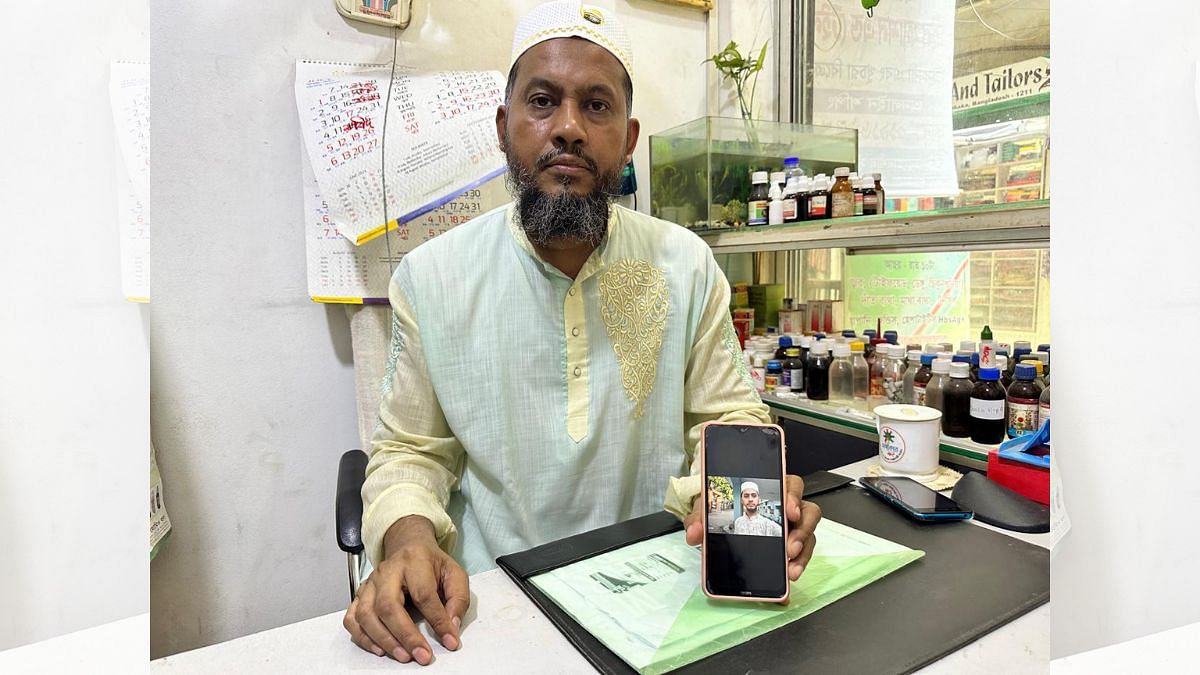
On 19 August, after the ouster of Sheikh Hasina, Kamrul filed a police complaint, accusing Hasina and 48 others, including former ministers and police officers, of the killing of his son and many others.
Kamrul said in his complaint in Bangla that students called for a nationwide peaceful protest in response to Awami League president Sheikh Hasina calling the protesting students “razakars” on 14 July.
Razakar is an offensive term for those accused of collaborating with Pakistan’s army in 1971 to betray the country.
Kamrul added in his complaint that the accused—who included Sheikh Hasina—allegedly conspired and gave provocative statements and orders to suppress the movement, which led to the killing of many students.
He claimed that under the “direct guidance, planning, and participation” of the accused, hundreds of sound grenades, tear gas, rubber bullets and live rounds were fired at unarmed students with the intent to kill.
About two months later, Kamrul is upset no one is fighting for his son who had dreamed of becoming a lawyer to help those without means to get justice.
“He wanted to be a barrister, to help the poor get justice. But will anyone help him get justice now? I doubt it,” he said. “There has been a grave injustice. A fair investigation is required, and I sincerely hope the interim government prioritises this.”
Civitas Legum has offered to help Kamrul register a case and get justice for his son, he says.
Kamrul told ThePrint that the organisation was collecting data on all the victims to help them and provide them with legal aid.
“Those who murdered my son so mercilessly should be arrested. Those who gave orders to shoot students and those who shot students should be hanged. I want them to be hanged and for them to understand that this was wrong and my son should get justice,” he said.
‘A science wizard who took two bullets in the heart’
Seventeen-year-old science prodigy Farhan Faiyazz’s family is also grappling with his death.
Faiyazz, who had a passion for social work, volunteered to go to a student protest on 18 July to make “his contribution” to the movement.
He collapsed after he was shot in the heart trying to protect his juniors when things turned violent.
“When I got a call from his friend saying he was shot, I could not believe him,” his aunt, Farzana Moonmoon, recalled.
“No one imagined that the police would shoot their own people. That, too, at students who did not have weapons and were holding a peaceful protest. Disgraceful,” she said.
She remembered that Faiyazz’s friend, Prottio, called her that day to say her nephew had stepped in to save him and took the bullets meant for him.
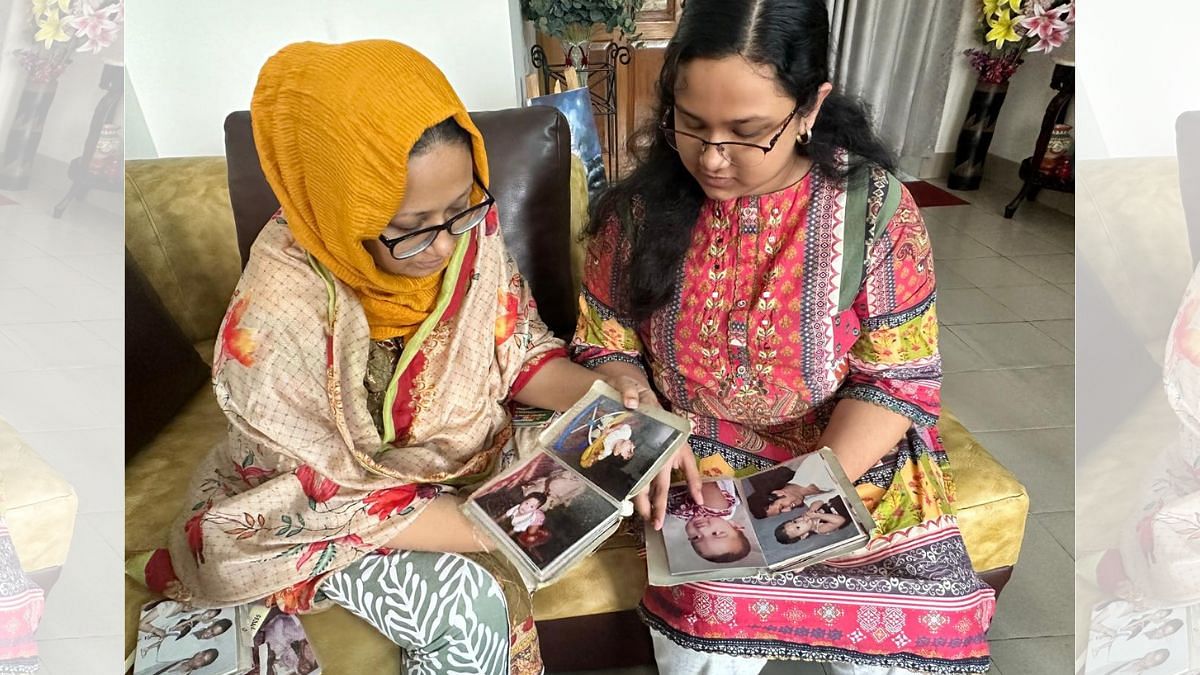
“He was hit twice in the heart. His juniors picked him up and rushed him to the hospital in a rickshaw,” she said.
Witnesses told her Chhatra League members and the police were there, firing tear gas and live rounds. It’s still unclear whose bullet hit Faiyazz, but she claims doctors suggested it appeared to be a police bullet.
Faiyazz’s cousin, Myreen, fondly remembers him as a brilliant student who dreamed of becoming a scientist and studying abroad.
“He was always against injustice. When he saw his seniors protesting and students getting hurt, he couldn’t stay away,” she said.
“He was a science genius with a bright future. I remember, in Class 5, he made a model where a door would open and sprinklers would turn on automatically. We were all amazed,” she added with a sad smile.
A special tribunal to record deaths
Several civil society groups are getting in touch with families and collecting information to ensure that these deaths get recorded as killings.
The information and communications technology adviser to the interim government, Nahid Islam, told ThePrint that a special tribunal has also been constituted in Dhaka to look into these cases. The victims are being identified, cases are being filed and action will be taken.
“The culprits are being identified by the police. Free treatment is also being provided to those injured in the hospital. The families of the martyrs are being contacted and a complete list is being compiled,” he said.
Apart from the authorities, Civitas Legum has also set up booths on campus where families can register the names of their students who were killed. It is providing legal aid to these families.
Civitas Legum is collecting detailed information from the victims’ families on everything from the place of attack and forces response to the hospital that provided medical support and witness accounts in an effort to file a proper lawsuit.
“We also collected relevant documents like photographs of the incidents, legal documents, hospital docs, post-mortem reports, statements of the family members and witnesses, etc for reserving the legal evidence. Based on that information we provide them legal suggestions,” Civitas Legum said in a written response to ThePrint.
‘Won’t allow a Razakar’s body… travelled 100 km to bury him’
Mannan is still traumatised by memories of the day he found his son’s body.
As he took Rehman’s body home to Mirpur, he says a group of Awami League supporters stopped him, saying they would not allow a “Razakar’s son’s body to be buried in the area”, as many Hasina supporters lived there.
He alleged that the local MP, Ilyasuddin Mollah even threatened to destroy his home if he brought back the body of his son who was part of the protests.
Mannan was turned away with his son’s dead body.
As the body began to decompose in the July heat, he thought of going straight to the burial ground next to Rehman’s school.
But little did he know that this, too, was not an option.
“The school’s principal, who used to be a Chhatra League (the student wing of the Awami League) member in his teenage years, refused to let the janaza (funeral) be held in school,” Mannan said.
“I was told, ‘this razakar won’t be allowed to enter here’. Not only was my son a good student in that school, he was also a good cricketer and won so many tournaments for them, but this is how his dead body was treated,” he added.
Mannan wandered with the body for a few hours before he decided to take it to his hometown, Khulna Bagerhat, about 200 km from Mirpur, where Rehman was finally laid to rest at midnight.
“He couldn’t even receive dignity in death. We could not bring his body back home to lay him to rest. I did not have time to cry, grieve for my son’s death,” Mannan wept.
While speaking to ThePrint, Musammat Begum, Rehman’s mother, was inconsolable.
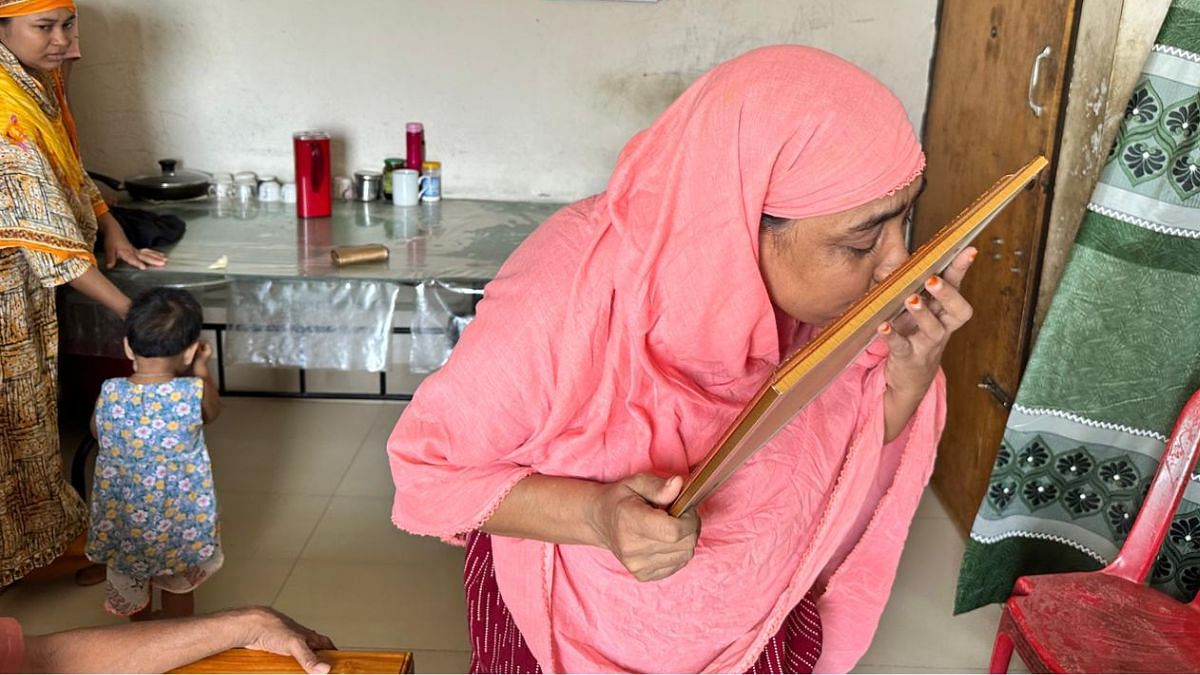
Clutching her son’s jersey, she cried, “He went out wearing this T-shirt on Thursday. The T-shirt still has his smell. I have not washed it,” she said. “My son! Why did they shoot my son? Had they put him in jail, I would have been able to take him out one day. What was my son’s fault? What was his crime? They could have broken his arm, his leg. Why take my only son away? Allah!! Will I ever get justice? Will those people who brutally killed my son ever be punished?”
(Edited by Sugita Katyal)



